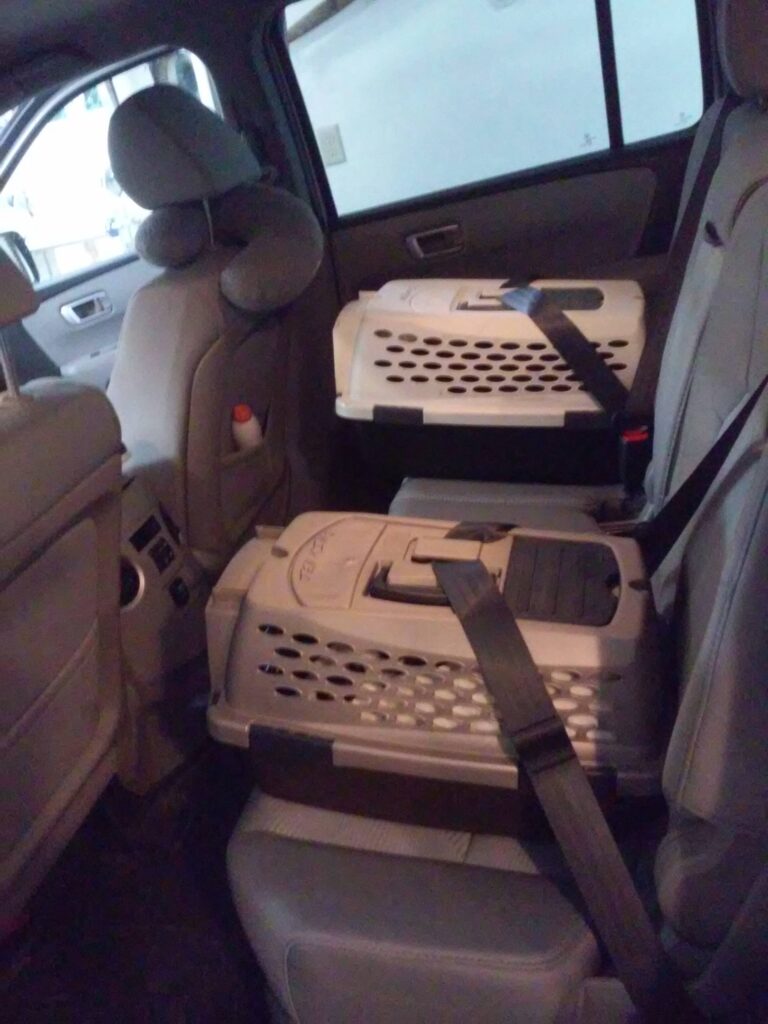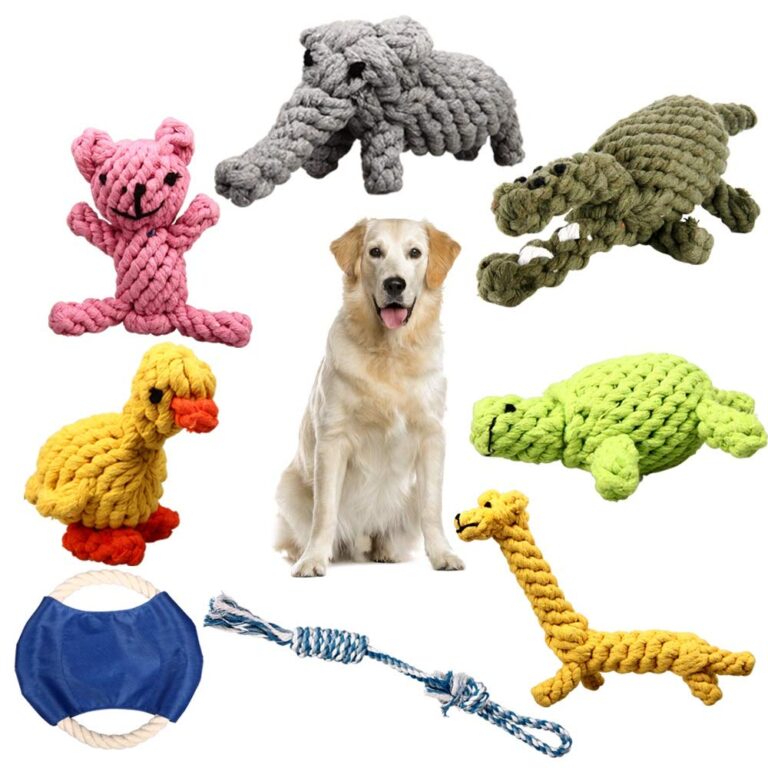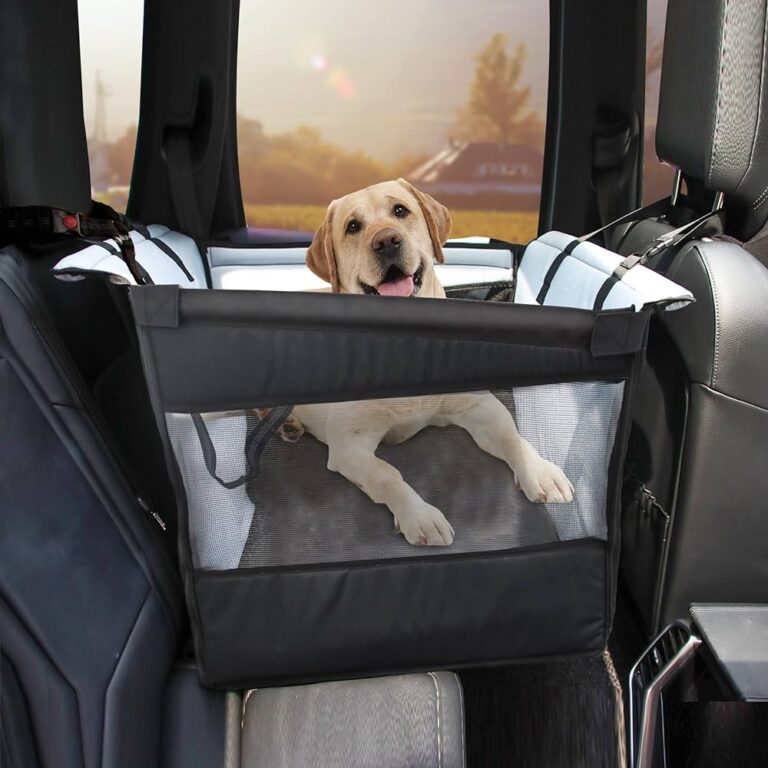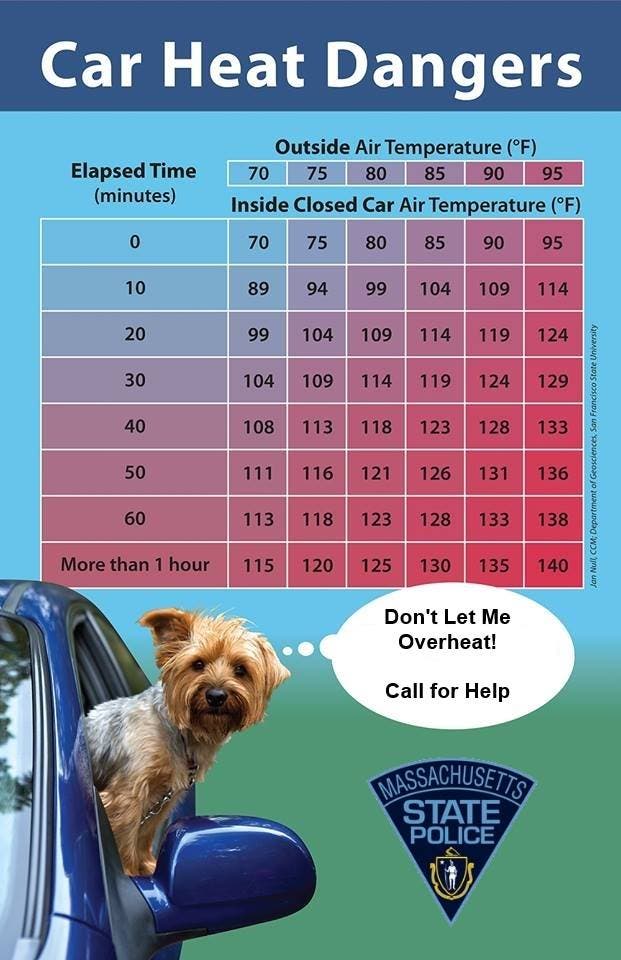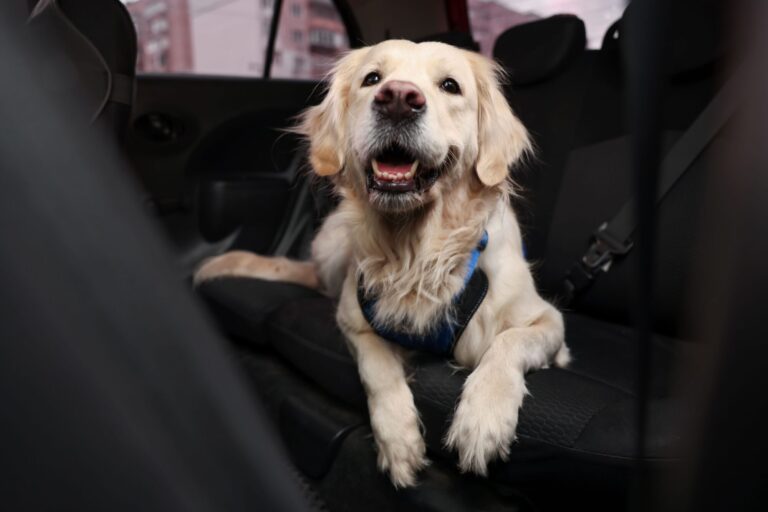What is the Best Way for a Dog to Ride in a Car?: Safe & Comfy Tips!
The best way for a dog to ride in a car is by using a secured pet seat belt or a well-ventilated crate. These options ensure the dog’s safety and comfort during the journey.
It is essential to prioritize the well-being of our furry companions while traveling in a vehicle. By following proper safety measures, we can prevent accidents and keep our dogs secure. Additionally, providing familiar items like their favorite blanket or toy can help reduce stress and make the car ride more enjoyable for them.
Remember, a happy and safe dog makes for a pleasant travel companion.
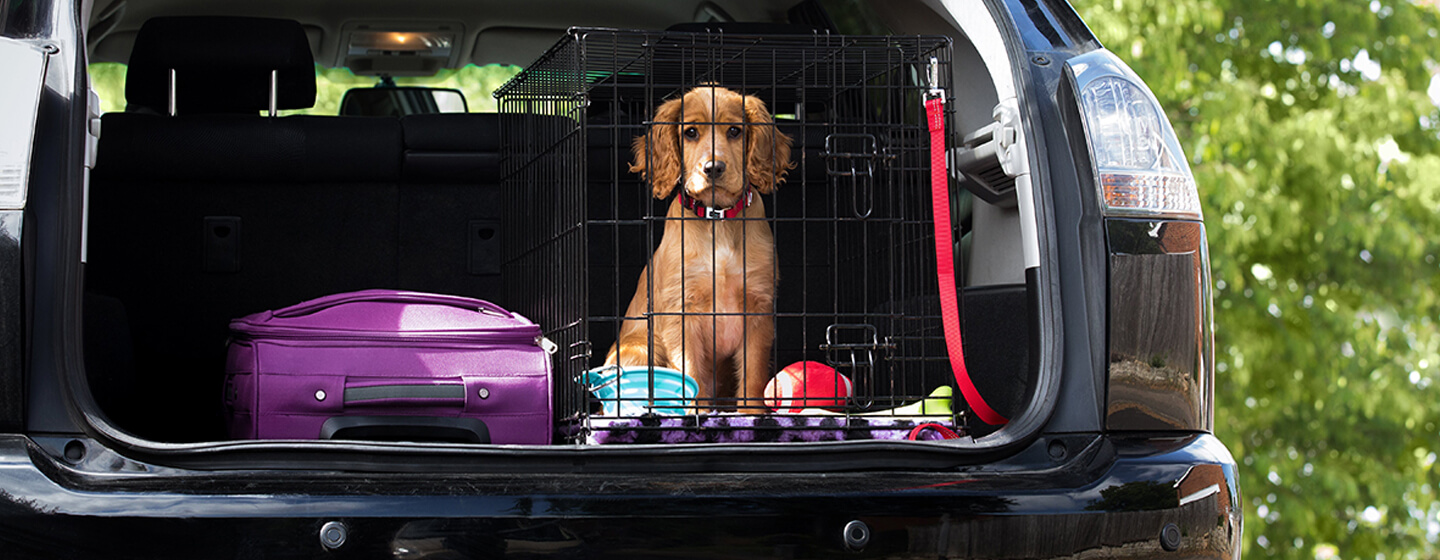
Credit: www.purina.co.nz
The Dangers Of Improper Car Travel With Dogs
When it comes to traveling in a car with your furry friend, safety should be a top priority. The dangers of improper car travel with dogs can lead to serious consequences for both the pet and the driver. Ensuring that your dog is properly secured and comfortable during car rides is essential to prevent potential injuries and distractions.
Potential Injuries From Sudden Stops
Improperly secured dogs can be at risk of serious injuries during sudden stops or accidents. Unrestrained dogs can be thrown around the vehicle, leading to fractures, internal injuries, or trauma. Proper restraints, such as harnesses or crates, are crucial in minimizing the risk of injuries to the dog in the event of a sudden stop or collision.
Distraction Risks For The Driver
Unrestrained dogs can also pose distraction risks for the driver, potentially leading to accidents. Dogs moving freely in the car can interfere with the driver’s ability to focus on the road and handle the vehicle safely. To mitigate distraction risks, it’s important to use appropriate restraints that keep the dog secure and prevent unwanted movement during the journey.

Credit: www.kurgo.com
Essential Safety Gear For Canine Car Rides
When taking your furry friend on a car ride, their safety should be a top priority. Essential safety gear for canine car rides ensures that your dog is secure and comfortable during the journey. From harnesses and seatbelts to crates and carriers, there are various options available to keep your dog safe while traveling in a vehicle.
Harnesses And Seatbelts
Harnesses and seatbelts are crucial for keeping your dog secure during car rides. A harness with an attached seatbelt provides a comfortable and secure way for your dog to ride in the car. It restrains them from moving around and prevents any potential injuries in case of sudden stops or accidents. It’s important to choose a harness that fits your dog properly and is designed for use in vehicles.
Crates And Carriers
Crates and carriers provide a safe and enclosed space for your dog during car rides. They offer protection and prevent your dog from roaming freely inside the vehicle, which can be distracting for the driver. Crates and carriers also create a familiar and secure environment for your dog, reducing anxiety and promoting a sense of comfort during the journey.
Selecting The Right Restraint For Your Dog
When it comes to traveling in a car with your furry friend, it’s important to ensure their safety and comfort. Selecting the right restraint for your dog is crucial to keep them secure and prevent any accidents or injuries. There are a few key factors to consider when choosing the most suitable restraint for your dog, including size and breed considerations, as well as the balance between comfort and security.
Size And Breed Considerations
When selecting a restraint for your dog, it’s essential to take into account their size and breed. Different dogs have different needs and requirements when it comes to car travel. Larger dogs may require a more robust restraint system, such as a crate or a harness with a seat belt attachment. Smaller dogs, on the other hand, may be more comfortable in a carrier or a booster seat. It’s important to choose a restraint that allows your dog to move comfortably while still keeping them secure during the journey.
Comfort Vs. Security
One of the main considerations when selecting a restraint for your dog is finding the right balance between comfort and security. While it’s crucial to keep your dog safe during car rides, their comfort should also be taken into account. A restraint that is too restrictive or uncomfortable can cause stress and anxiety for your furry friend. On the other hand, a restraint that provides too much freedom may not adequately protect them in case of sudden stops or accidents. Look for a restraint that offers both security and comfort, ensuring your dog feels at ease while being safely restrained.
In conclusion, selecting the right restraint for your dog is vital for their safety and well-being during car rides. Consider their size and breed to determine the most suitable type of restraint, whether it’s a crate, harness, carrier, or booster seat. Find a balance between comfort and security to ensure your dog feels both secure and comfortable throughout the journey. By choosing the appropriate restraint, you can enjoy car rides with your furry companion while keeping them safe and content.

Credit: news.orvis.com
Installation Tips For Dog Car Seats And Restraints
Ensuring your dog’s safety and comfort while traveling in a car is essential. One of the best ways to achieve this is by using dog car seats and restraints. These provide a secure and designated space for your furry friend, preventing them from moving around and potentially causing distractions or harm. Here are some installation tips to help you set up dog car seats and restraints correctly:
Step-by-step Guide
- Start by selecting a suitable dog car seat or restraint that is appropriate for your dog’s size and weight. Ensure it is compatible with your vehicle.
- Read the manufacturer’s instructions carefully before attempting to install the dog car seat or restraint. Following the guidelines provided will ensure proper installation and maximum safety.
- Place the dog car seat or restraint in the backseat of your car. This area is generally safer for your pet compared to the front seat.
- Secure the dog car seat or restraint using the vehicle’s seat belt or the designated anchors in your car. This will prevent it from shifting or moving during sudden stops or turns.
- Adjust the straps or harnesses of the dog car seat or restraint to fit your dog snugly. It should be secure enough to prevent your dog from escaping or falling out, but not too tight that it causes discomfort.
- Test the stability of the dog car seat or restraint by gently shaking it. If it feels loose or unstable, readjust and secure it properly.
Common Mistakes To Avoid
- Avoid placing the dog car seat or restraint in the front seat, as it can be dangerous if the airbags deploy in an accident.
- Do not rely solely on a leash or collar to restrain your dog in the car. These can be ineffective in preventing your dog from moving around or getting injured.
- Never leave your dog unattended in a car, even if they are secured in a dog car seat or restraint. Extreme temperatures can pose a risk to their health and safety.
- Avoid using a dog car seat or restraint that is too small or too large for your dog. It should provide enough space for them to sit, stand, and lie down comfortably.
- Regularly check the condition of the dog car seat or restraint for any signs of wear and tear. Replace it if necessary to ensure continued safety.
Training Your Dog To Enjoy Car Rides
Teaching your dog to enjoy car rides is crucial for their safety and your peace of mind. The best way for a dog to ride in a car is in a secure, comfortable and familiar spot, such as a crate or a harness.
Gradual exposure and positive reinforcement can help your furry friend overcome any fear or anxiety related to car rides.
Acclimatization Techniques
Start by introducing your dog to the car gradually, allowing them to sniff around and get comfortable.
Practice short rides at first, gradually increasing the duration as your dog becomes more at ease.
Positive Reinforcement Strategies
Reward your dog with treats, praise, and petting to create a positive association with car rides.
Use toys and blankets to make the car a cozy and familiar environment for your dog.
The Role Of Regular Breaks During Long Trips
During long trips, it is essential to ensure your dog’s safety and comfort in the car. The best way for a dog to ride in a car is by using a secure harness or a well-ventilated crate to prevent accidents and keep them relaxed.
Remember to take regular breaks for your furry friend to stretch their legs and stay hydrated.
Planning Your Route
When it comes to traveling with your furry friend, planning ahead is crucial. Before embarking on a long car ride, it’s important to map out your route and identify rest stops along the way. This will allow you to plan for regular breaks, which are essential for your dog’s comfort and wellbeing.Hydration And Exercise
During breaks, make sure to offer your dog plenty of water and allow them time to stretch their legs. This will not only keep them hydrated and comfortable, but also help prevent stiffness and joint pain. Additionally, incorporating exercise into your breaks can help keep your dog alert and prevent boredom during long car rides. Regular breaks are essential for ensuring your dog’s safety and comfort during long car rides. Not only do they provide opportunities for exercise and hydration, but they also allow your dog to relieve themselves and prevent accidents in the car. By planning your route ahead of time and incorporating regular breaks, you can ensure a safe and enjoyable travel experience for both you and your furry companion.Temperature Control And Ventilation
When it comes to traveling with your furry friend, ensuring their comfort and safety in the car is paramount. Temperature control and ventilation play a crucial role in keeping your dog at ease during car rides. Here are some essential tips for maintaining the ideal temperature and ventilation for your canine companion.
Avoiding Overheating
During car journeys, prevent your dog from overheating by ensuring the vehicle’s interior is kept at a comfortable temperature. Avoid leaving your dog in a parked car, especially on hot days, as temperatures can quickly soar, posing a serious risk to your pet’s health. If the weather is warm, use air conditioning or keep the windows open to allow cool air circulation.
Ensuring Fresh Air Flow
Maintaining adequate ventilation is essential for your dog’s well-being during car rides. Open windows slightly to allow fresh air to enter the vehicle, providing your dog with a pleasant and breathable atmosphere. Consider using a window vent or a dog safety harness to allow safe and controlled airflow, ensuring your pet stays comfortable and relaxed throughout the journey.
Emergency Preparedness On The Road
When traveling with your dog, it’s crucial to be prepared for any unforeseen circumstances that may arise on the road. Emergency preparedness is essential to ensure the safety and well-being of your furry companion, especially during car rides. Here are some important aspects of emergency preparedness that every dog owner should consider.
First Aid Kits
It’s imperative to have a well-stocked first aid kit specifically designed for your dog’s needs. The kit should include essentials such as bandages, antiseptic wipes, gauze pads, tweezers, and any medications your dog may require. Additionally, it’s important to familiarize yourself with basic first aid procedures for dogs, such as how to handle minor injuries or provide temporary care until veterinary assistance can be obtained.
Contact Information And Identification
Always ensure that your dog is wearing a collar with an ID tag that includes your current contact information. Microchipping your dog is also highly recommended as it provides a permanent form of identification. In case of an emergency, having visible and easily accessible contact information can greatly assist in reuniting you with your dog if you become separated during a car ride.
Frequently Asked Questions
How Should Your Dog Ride In The Car?
To ensure your dog’s safety while riding in the car, follow these guidelines: use a secure crate or harness, keep windows closed or use doggy seat belts, avoid letting them stick their head out, and never leave them alone in a hot car.
How To Train An Adult Dog To Ride In A Car?
To train an adult dog to ride in a car, start by introducing them to the car gradually. Allow them to explore the car and reward them with treats. Once comfortable, take short trips, gradually increasing the duration. Make sure to use a secure harness or crate for safety.
Patience and positive reinforcement are key.
How Can I Make My Dog Ride Easier In The Car?
To make your dog’s car ride easier, use a comfortable harness or crate, take short practice trips, and provide familiar items like toys and blankets. Additionally, use calming aids if needed and take regular breaks for walks and bathroom breaks.
Should Dogs Sit In The Front Or Back Of A Car?
Dogs should sit in the back of the car for safety. Use a pet seat belt or a secured crate to keep them safe.
Conclusion
To ensure your dog’s safety and comfort while riding in a car, consider using a secured crate or harness. It’s essential to prioritize their well-being by avoiding loose roaming or sticking their head out of windows. Remember, a happy and secure dog makes for a pleasant car journey for all.
- Can I Get in a Taxi Without a Car Seat? - January 26, 2025
- Can I Get Chlamydia From a Toilet Seat? - January 26, 2025
- Can I Get an Uber With a Car Seat? - January 26, 2025

